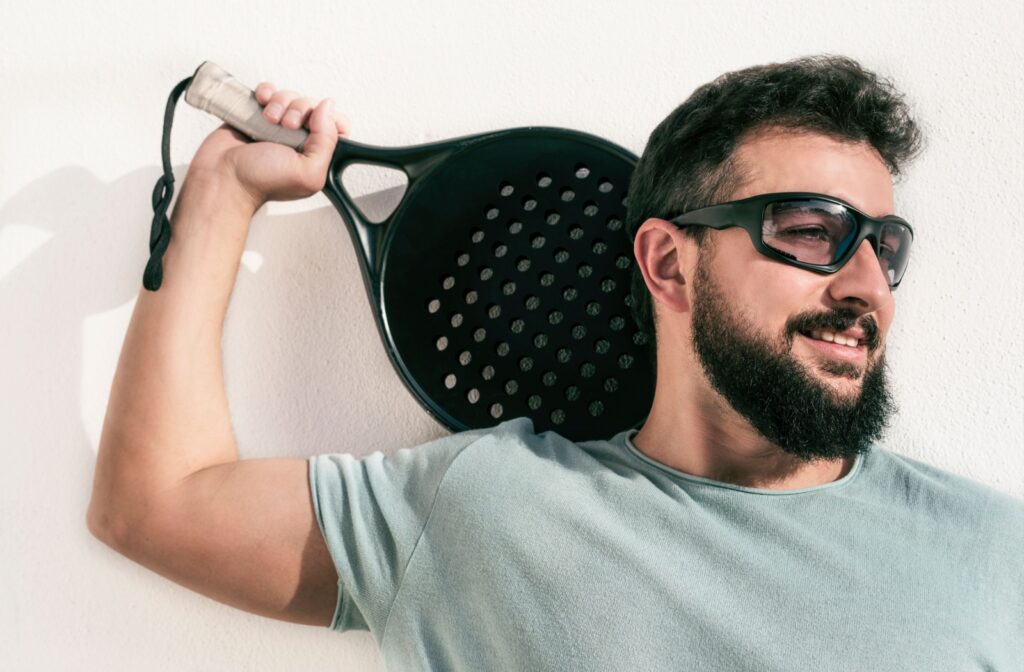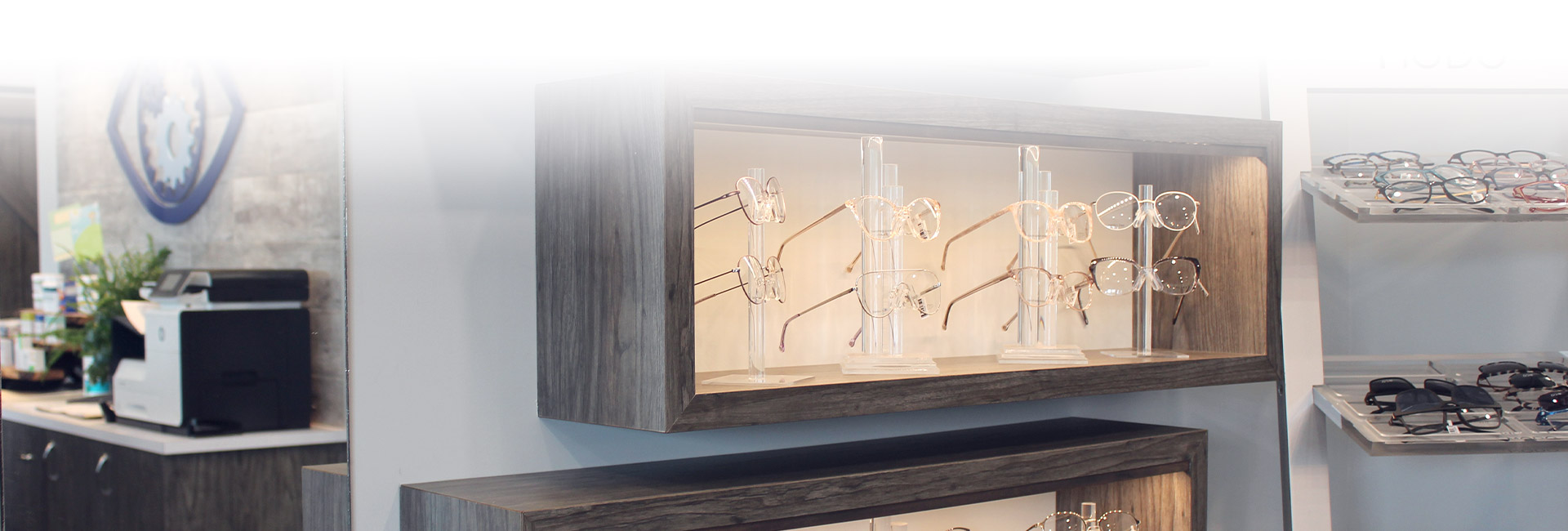Athletes of all ages depend on split-second decisions, precise movements, and crystal-clear vision. Yet, many athletes take to the field, court, or track without a second thought about how their eyesight affects their performance—or how vulnerable their eyes are to injury.
Sports-related eye injuries send thousands of Canadians to emergency rooms each year, with many of these injuries being completely preventable with proper protective eyewear. Whether for yourself or a child, sports eyewear should be as important as shoes and pads. The key to choosing effective protective sports eyewear lies in matching the specific protection to your chosen sport while focusing on clarity and comfort that won’t compromise your performance.
How Vision Affects Athletic Performance
Athletic success depends heavily on visual processing and body awareness. When athletes can see clearly and track movement accurately, their body control improves dramatically. Sharp vision enables players to judge distances accurately, anticipate their opponents’ movements, and react with precise timing.
Research shows that athletes with optimal vision perform better across all sports categories. This is often because of the visual skills tied to better athletic performance, such as:
- Hand-eye coordination
- Depth perception
- Peripheral (side) vision
- Eye tracking
- Focus and range switching
Body control in sports starts with visual input. Athletes are constantly processing visual information. When vision is compromised—either through poor eyesight or eye trauma—the entire body suffers, resulting in decreased performance and an increased risk of injury.
Common Sports Eye Injuries
Sports eye injuries occur more frequently than most people realize, and they can range from minor irritations to sight-threatening emergencies:
- Corneal abrasions: The eye’s clear front dome, known as the cornea, is a crucial part of protecting the eye and maintaining clear vision. Corneal injuries represent one of the most common sports-related eye injuries. These scratches on the eye’s surface typically occur when fingers, equipment, or debris make contact with the eye. While uncomfortable, corneal abrasions usually heal within a few days with proper care.
- Blunt trauma injuries: Eye trauma can happen when balls, equipment, or body parts strike the eye area with significant force. These impacts can cause black eyes, orbital fractures, or more serious internal eye damage. Sports like basketball, baseball, and hockey often see higher rates of blunt trauma injuries due to fast-moving objects and close player contact.
- Photokeratitis: Injuries don’t only occur due to direct damage. UV rays to unprotected eyes can cause painful conditions, such as corneal sunburn (photokeratitis), or contribute to long-term eye health problems, including cataracts and macular degeneration.
Essential Features of Quality Sports Eyewear
Selecting effective protective sports eyewear requires attention to several critical qualities that provide both safety and performance. When considering your eyewear, here are some features to keep in mind:
- Impact resistance
- Proper fit and retention
- Optical quality
- Ventilation and fog resistance
- UV protection
Look for eyewear that meets or exceeds Canadian Standards Association (CSA) impact requirements for your specific sport. For example, polycarbonate lenses offer excellent impact resistance while remaining lightweight and optically clear.

Protection Requirements for Each Sport
Different sports present unique eye injury risks, requiring specialised protection strategies. Here are some of the specific hazards you should keep in mind depending on your sport:
- Contact sports: This can include hockey, football, lacrosse, and basketball. These sports involve frequent body contact, flying equipment, and fast-moving players in close proximity. Protective eyewear for contact sports must withstand significant impact while staying securely in place during intense physical activity.
- Racquet sports: Sports like tennis, squash, and pickleball present unique challenges due to small, fast-moving balls. Protective eyewear for racquet sports should provide wraparound protection while allowing for quick head movements and maintaining peripheral vision.
- Water sports: Swimming goggles can protect against chlorine and other pool chemicals, while water skiing and wakeboarding demand impact-resistant eyewear that stays secure at high speeds.
- Winter sports: Even in the coldest months of winter, intense UV reflection from snow and ice can offer unique vision challenges. Ski goggles and protective sunglasses should block UV radiation while preventing fogging and glare in varying weather conditions.
Making the Right Choice for Your Needs
When selecting your eyewear, begin by honestly evaluating your sport’s injury risks and protection requirements. Research the specific standards recommended for your activity and look for eyewear that meets or exceeds those guidelines. Consider your playing environment, including lighting conditions, weather exposure, and proximity to other players or equipment.
Factor in your vision correction needs and comfort preferences. Protective eyewear that feels uncomfortable or interferes with your vision will likely remain unused. Additionally, try different styles. You can enjoy both durability and flair when you explore all the stylish options available.
Protect Your Vision & Elevate Your Game
Your eyes are irreplaceable assets that deserve the same protection you give to other parts of your body during athletic activities. Quality protective sports eyewear not only prevents serious injuries but can also enhance your performance by providing clear vision.
Don’t let a preventable injury sideline your athletic pursuits or threaten your child’s vision.
Ready to find the perfect protective eyewear for your sport? Our experienced team at Beyond 20/20 Optometry has you covered. We can conduct a comprehensive eye exam and analyse your sport-specific needs to help you choose protective eyewear that helps keep you safe. Book your appointment today and take the first step toward protecting your most valuable player—your sight.




